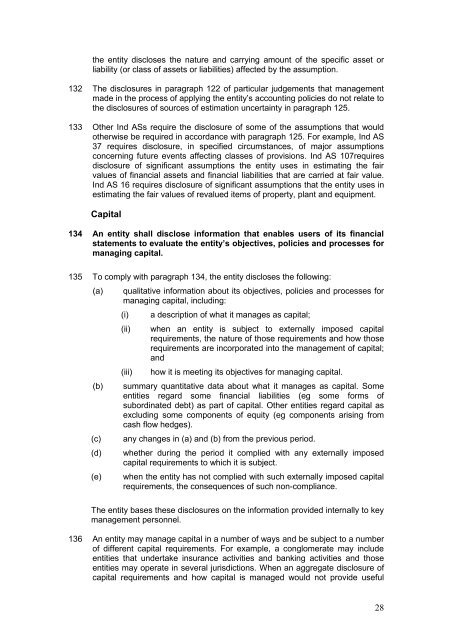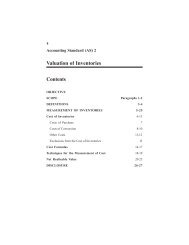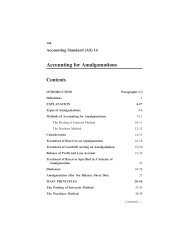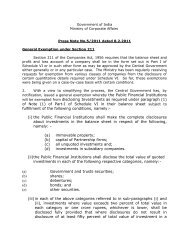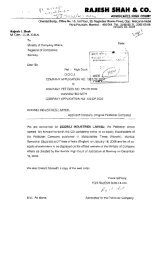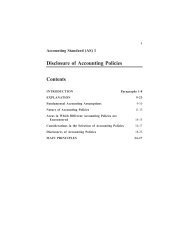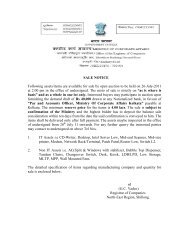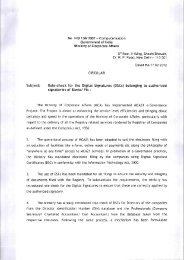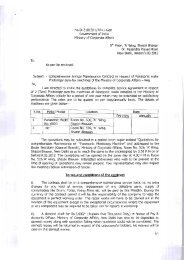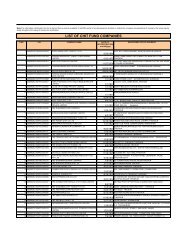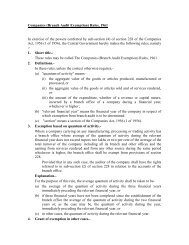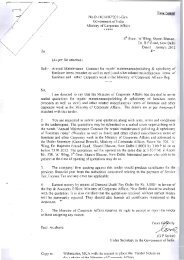Indian Accounting Standards(Ind AS) 1
Indian Accounting Standards(Ind AS) 1
Indian Accounting Standards(Ind AS) 1
You also want an ePaper? Increase the reach of your titles
YUMPU automatically turns print PDFs into web optimized ePapers that Google loves.
the entity discloses the nature and carrying amount of the specific asset or<br />
liability (or class of assets or liabilities) affected by the assumption.<br />
132 The disclosures in paragraph 122 of particular judgements that management<br />
made in the process of applying the entity’s accounting policies do not relate to<br />
the disclosures of sources of estimation uncertainty in paragraph 125.<br />
133 Other <strong>Ind</strong> <strong>AS</strong>s require the disclosure of some of the assumptions that would<br />
otherwise be required in accordance with paragraph 125. For example, <strong>Ind</strong> <strong>AS</strong><br />
37 requires disclosure, in specified circumstances, of major assumptions<br />
concerning future events affecting classes of provisions. <strong>Ind</strong> <strong>AS</strong> 107requires<br />
disclosure of significant assumptions the entity uses in estimating the fair<br />
values of financial assets and financial liabilities that are carried at fair value.<br />
<strong>Ind</strong> <strong>AS</strong> 16 requires disclosure of significant assumptions that the entity uses in<br />
estimating the fair values of revalued items of property, plant and equipment.<br />
Capital<br />
134 An entity shall disclose information that enables users of its financial<br />
statements to evaluate the entity’s objectives, policies and processes for<br />
managing capital.<br />
135 To comply with paragraph 134, the entity discloses the following:<br />
(a) qualitative information about its objectives, policies and processes for<br />
managing capital, including:<br />
(i) a description of what it manages as capital;<br />
(ii) when an entity is subject to externally imposed capital<br />
requirements, the nature of those requirements and how those<br />
requirements are incorporated into the management of capital;<br />
and<br />
(iii) how it is meeting its objectives for managing capital.<br />
(b) summary quantitative data about what it manages as capital. Some<br />
entities regard some financial liabilities (eg some forms of<br />
subordinated debt) as part of capital. Other entities regard capital as<br />
excluding some components of equity (eg components arising from<br />
cash flow hedges).<br />
(c) any changes in (a) and (b) from the previous period.<br />
(d) whether during the period it complied with any externally imposed<br />
capital requirements to which it is subject.<br />
(e) when the entity has not complied with such externally imposed capital<br />
requirements, the consequences of such non-compliance.<br />
The entity bases these disclosures on the information provided internally to key<br />
management personnel.<br />
136 An entity may manage capital in a number of ways and be subject to a number<br />
of different capital requirements. For example, a conglomerate may include<br />
entities that undertake insurance activities and banking activities and those<br />
entities may operate in several jurisdictions. When an aggregate disclosure of<br />
capital requirements and how capital is managed would not provide useful<br />
28


